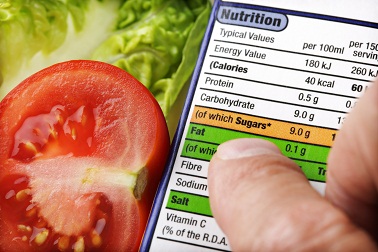
Do you make a habit of reading the food label before you buy a product? Many people have good intentions. However, food labels can be so darn confusing that it’s difficult to understand
what you’re looking at. Let’s break it down so you know what you’re buying and putting into your body.
Serving Size
The serving size on any given label can be different. For example, you can look at two packages of cookies from two different companies. The cartons may have the same number of cookies but different serving sizes. It’s important to know the quantity of food that they’re basing their nutrition information on. For example, if a serving size is five cookies and the sugar per serving is nine grams that’s better than one with a serving size of two cookies but the same amount of sugar.
Nutritional Information
The second most prominent part of a food label is the nutrition information. Here you want to look for the following pieces of information:
Nutrients and the amount of a particular nutrient per serving. For example, 9 grams of sugar per serving.
% Daily Value provides information about how much of this particular nutrient you should consume based on the government’s RDA, recommended daily value. Some nutrients won’t have a percent daily value. For example, sugar will be listed in grams but won’t have an independent %. Instead, it will be grouped under the heading carbohydrates which also includes dietary fiber.
You’ll also often find a food label that includes calories from saturated fat, polyunsaturated fat, monounsaturated fat, potassium, soluble fiber, insoluble fiber, sugar alcohol, other carbohydrate, and other essential vitamins and minerals. This information isn’t required so you won’t find it on all products.
Ingredients
This is the section of the food label that is often most confusing. Many products are packed with compounds that just don’t sound like food. For example, Sodium benzoate is commonly found in many processed foods. It’s a preservative. Sodium benzoate is created by the neutralization of benzoic acid with sodium hydroxide and while it is often added to food, it’s also used to make fireworks. The ingredients on your food label are listed in order. If water is listed first then you know that the majority of the product is made from water. Ideally the first five ingredients of any food should be natural ingredients. If you start seeing chemicals right away, consider purchasing a different product.
Finally, know that there aren’t restrictions on the word ‘natural’ on product labeling. However, if a product says that it’s organic then it has been certified organic. There are other labeling requirements as well. For example, for a product to claim it is low sodium it must contain less than 5 mg per serving
Understanding food labels is an important step to improving your health and wellbeing. Make it a habit. Start reading food labels today.

